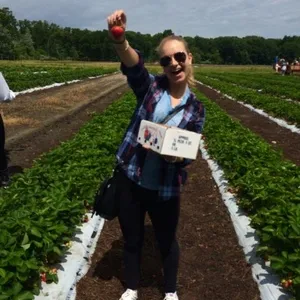Healthy eating in America is at low levels, and data from 2016 shows that the number of US adults reporting healthy eating habits has decreased by over 10 million since 2010.
It isn’t breaking news that a healthy lifestyle, including healthy eating habits, is associated with risk for chronic diseases like obesity, heart disease, and diabetes. So where is the disconnect between the knowledge and making those habits come to life?
There’s a lot to say about the impacts of where we live on our lifestyles. A recent report, part of the State of American Well-Being series, examined healthy eating across the country, ranking communities on the percentages of citizens who reported eating healthy the previous day. Communities of Naples, FL, Barnstable Town MA, and Santa Cruz, CA ranked the highest, with just about 75% of citizens reporting healthy eating.
With the right environments, tools, resources, and initiatives, we can make strides towards a healthier country on step at a time. To the benefit of the rest of the country, we can hone in on the communities with the highest rates of healthy eating and learn from them in order to head in the direction of a healthier United States.
What those communities are accomplishing

In the report, key areas of focus were highlighted as factors that heavily influence healthy eating. As the bridge between knowing what to eat and feeling able to actually do it, these are areas that citizens of the healthiest communities succeed with. These crucial factors include reaching goals, being surrounded by relationships that are strong than ever, learning and doing interesting things every day, and finding positive energy and support from surrounding people and environments.
How to make improvements for yourself and your community
There are two pieces to this puzzle. The first thing is that as a country there needs to be a bigger push towards more active approaches to better population health. The second thing is being able to work towards a healthy lifestyle on an individual basis. Taking these strategies and weaving them into our daily lives, one person as a time, can soon make a huge different in the country.
Improving access to healthy foods

Urge your community to implement policies that secure farmer’s markets and community gardens as accessible and affordable ways to find local produce.
And for yourself, do a quick Google search of nearby farmer’s markets, start your own backyard veggie garden, and seek out sales on healthy produce items in order to make it easy to add more fruits and vegetables into your diet.
Reducing access to, and marketing of, unhealthy fast food
With zoning regulations, communities can prohibit fast food restaurants from operating within 500 feet of public schools and playgrounds. Lobbying for minimized operation and marketing of fast food in the most populated areas of town can make a big difference. We are creatures of convenience and what’s around is what we choose, so minimizing unhealthy options from our environments makes the choices later on much easier.
Create a community of support and positive energy
The nation’s healthiest eating communities all were found to have individuals who felt supported and surrounded by positive energy from friends, family, and other community members. Get involved in your community by creating healthy habits with other people, and create a support network that can empower every one in it to work towards healthier lifestyles.
Start a monthly healthy potluck night with neighbors in your apartment building, register for a local 5k run with a friend, try a new recipe and share it with your roommates, and start a chain of positive energy and encouragement towards others around you. Build up your own healthy lifestyle and allow it to spread through whatever community you’re in.



